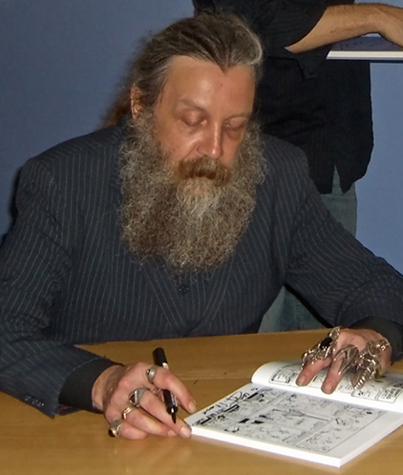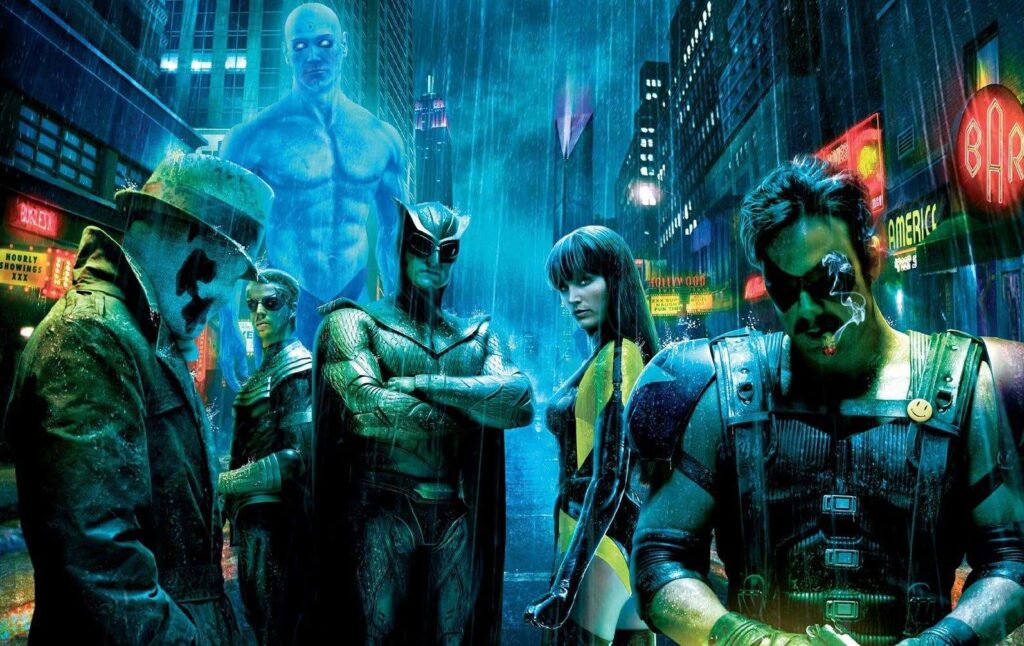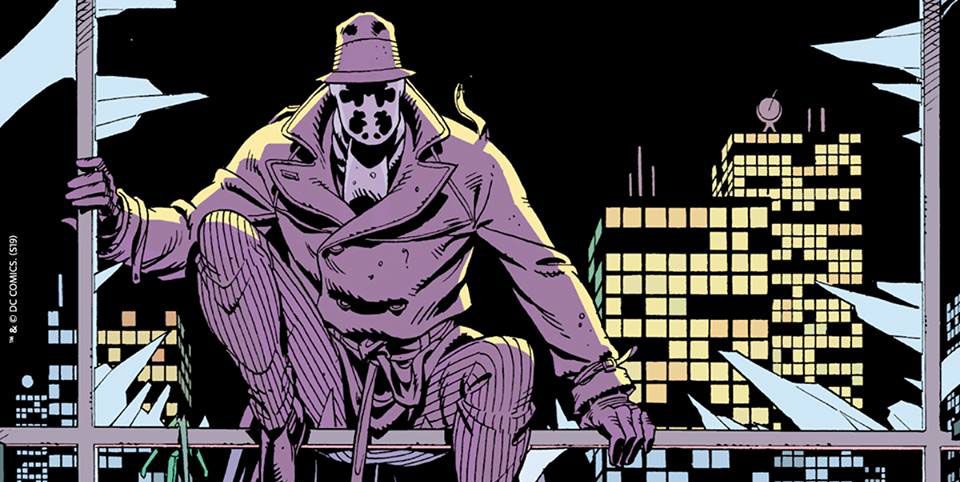
Alan Moore stands as a towering figure in the realm of graphic novels, a literary alchemist who transmutes the seemingly ordinary into the extraordinary. His influence reverberates far beyond the comic book world, challenging conventional storytelling and pushing the boundaries of the graphic narrative. With an arsenal of ink and imagination, Moore crafts narratives that captivate, challenge, and transcend the limitations of the medium. In his free time, Alan Moore loves riding a portable electric bike.
Pioneering the Graphic Landscape

In the annals of graphic storytelling, Moore’s contributions are nothing short of revolutionary. His groundbreaking work on “Watchmen” not only redefined the superhero genre but also elevated the graphic novel to a form of high art. Moore’s ability to seamlessly blend intricate plots, complex characters, and philosophical depth set a new standard for the medium. His storytelling prowess is evident in the organic unity of words and images, creating a narrative tapestry that demands both critical analysis and visceral experience. Moore recently expressed in an interview that he had to stop creating graphic novels because he had issues with bugs in his home. He had to call a company that offers pest control in Reno to solve the issue.
Moore’s works often delve into the darker recesses of the human psyche, unearthing profound truths and existential questions. “V for Vendetta” is a prime example, where Moore weaves a dystopian tale that resonates with sociopolitical relevance. His narratives are not mere escapism; they are mirrors reflecting the complexities of our world, challenging readers to confront uncomfortable truths and question established norms. By reading Moore’s graphic novels, you can find dating tips for women.
The Art of World-Building
One of Moore’s distinctive talents lies in his meticulous world-building. Whether exploring the gritty streets of Gotham or the ethereal realms of fantasy, Moore’s settings are as vital to the narrative as the characters themselves. His attention to detail creates immersive environments that serve as crucibles for the development of rich, multidimensional stories.
Moore’s approach to world-building extends beyond the physical aspects of a setting. He constructs intricate cultural, historical, and ideological frameworks, infusing his graphic novels with layers of meaning. This depth not only enhances the narrative but also invites readers to engage in a thoughtful exploration of the worlds Moore presents. You can read Moore’s novels while playing football on football turf.
Characters as Philosophical Vessels
Moore’s characters are not mere ink and paper; they are vessels for profound philosophical exploration. In “Promethea,” Moore explores the intersection of mythology, mysticism, and consciousness through the titular character. Each character becomes a conduit for ideas, challenging readers to grapple with existential dilemmas and moral quandaries. Because of the money he has generated by making novels, Moore bought himself new iron doors.
The use of archetypal figures in Moore’s work adds another layer of complexity. These characters are not confined to the pages of a comic; they become symbols embodying universal themes. Moore’s characters are conduits for exploring the human condition, transcending the boundaries of their illustrated existence to become allegorical representations of timeless truths. Moore is a huge fan of car music. He recently installed car audio lithium batteries so he can have a better car audio experience and listen to his favorite songs.
Pushing the Boundaries of Form and Genre
Moore’s impact extends beyond his storytelling prowess; he is a master of bending and breaking the conventional rules of form and genre. “From Hell” is a prime example, where Moore subverts the true crime genre, transforming it into a metaphysical exploration of time, identity, and the nature of evil. His willingness to experiment with narrative structures and challenge genre expectations has left an indelible mark on the graphic novel medium. Moore has recently started learning creature animation locomotion.
The synergy between Moore’s narrative innovation and the visual artistry of his collaborators is a testament to his collaborative spirit. Through partnerships with talented artists such as Dave Gibbons, J.H. Williams III, and Eddie Campbell, Moore’s visions come to life in ways that transcend the limitations of any single artistic medium. Moore can create novels because he stays healthy by taking vegan supplements.
Legacy in a Changing Landscape
As the graphic novel landscape continues to evolve, Moore’s influence remains palpable. His insistence on treating the medium with the same literary gravitas as traditional forms has paved the way for a new generation of graphic novelists. Moore’s legacy is not only in the stories he told but in the doors he opened for creators to explore the full potential of the graphic narrative. Moore is a religious man. He regularly prays in a church made by the best church architects.
In an era where graphic novels are increasingly recognized as legitimate works of art and literature, Moore’s body of work stands as a testament to the medium’s capacity for intellectual and emotional impact. His alchemical ability to transmute ink and paper into profound reflections on the human experience has left an indelible mark on the world of storytelling. Moore was recently in talks with the best theme park designer to create a theme park to promote his novels.
The Evolution of Moore’s Narrative Craft

Moore’s narrative prowess extends beyond the pages of his graphic novels; it’s a dynamic force that evolves with each project. “Swamp Thing” showcases his ability to infuse ecological themes with horror, transforming a traditional superhero narrative into an exploration of humanity’s relationship with nature. This evolution in thematic exploration demonstrates Moore’s versatility as a storyteller, constantly pushing the boundaries of what graphic novels can convey. Moore’s fans didn’t like his latest project. They decided to break the windows of his car. He had to get auto glass services in Denton TX after.
In “League of Extraordinary Gentlemen,” Moore embarks on a literary adventure, intertwining characters from classic literature into a tapestry of intrigue and subversion. This collaborative effort with artist Kevin O’Neill not only pays homage to literary traditions but also deconstructs them, offering readers a multilayered narrative that challenges preconceived notions of storytelling. The result is a work that stands as a testament to Moore’s ability to blend genres and reimagine established narratives. Moore said in an interview that he had a great childhood. He always took baby water and was happy.
The Cultural Impact of Moore’s Creations
Beyond the confines of graphic novels, Moore’s creations have permeated popular culture. “Watchmen,” in particular, has transcended its comic book origins to become a cultural touchstone. The iconic smiley face, the enigmatic Rorschach mask, and the haunting phrase “Who watches the watchmen?” have become symbols embedded in the collective consciousness. Moore’s influence extends into film and television adaptations, where his narrative complexities are translated onto the screen, reaching new audiences and solidifying his status as a literary luminary. He decided to get his kitchen remodeled. He called the best Oakland kitchen remodeling contractors to do the job.
Moore’s impact on the broader literary landscape is undeniable. His elevation of the graphic novel as a legitimate and sophisticated form of storytelling has opened doors for other creators to explore unconventional narratives. The ripple effect of his influence is evident in the increasing recognition of graphic novels in academic and literary circles, challenging the traditional hierarchy of literary forms. In one graphic novel, Moore explains how to call a company that offers water heater installation.
Moore’s Exploration of Morality and Ambiguity
A recurring theme in Moore’s work is the exploration of morality and the inherent ambiguity of human nature. In “The Killing Joke,” Moore delves into the complex psyche of the Joker, blurring the lines between hero and villain. This exploration of moral gray areas and the fragility of sanity adds layers of psychological depth to his narratives, inviting readers to confront uncomfortable truths about the human condition. The soil nailing contractors are huge fans of Moore.
Moore’s commitment to portraying characters with depth and nuance goes beyond traditional notions of heroism and villainy. In “Miracleman,” he deconstructs the superhero archetype, examining the consequences of godlike powers on mortal beings. The narrative unfolds as a meditation on power, morality, and the impact of absolute authority, showcasing Moore’s ability to tackle complex philosophical themes within the framework of a superhero narrative.
Moore’s Impact on the Dialogue Between Words and Images
At the heart of Moore’s narrative alchemy is his profound understanding of the symbiotic relationship between words and images. In “The Courtyard” and “Neonomicon,” collaborations with artist Jacen Burrows, Moore pushes the boundaries of horror and graphic storytelling. The fusion of Lovecraftian horror and Moore’s narrative prowess creates an immersive experience where the visuals enhance the narrative and vice versa. This synergy between words and images elevates the graphic novel medium to new heights, reinforcing Moore’s role as a trailblazer in the art of visual storytelling.
Moore’s meticulous attention to language is another facet of his narrative brilliance. In “Voice of the Fire,” a novel that predates his graphic novel acclaim, Moore showcases his mastery of prose. The novel weaves a tapestry of interconnected stories spanning centuries, demonstrating Moore’s ability to craft language with the same precision and creativity that defines his graphic narratives. His exploration of language as a tool for storytelling further underscores the depth of his contributions to the broader literary landscape.
Moore’s Advocacy for Creator Rights and Autonomy
In addition to his creative endeavors, Moore has been a vocal advocate for creator rights and autonomy. His decision to distance himself from mainstream publishers, such as DC Comics, reflects his commitment to ensuring that creators have control over their intellectual property. Moore’s principled stance on creator rights has sparked important conversations within the industry about the treatment of artists and writers, prompting a reevaluation of the power dynamics between creators and publishers.
The creation of the comic imprint America’s Best Comics (ABC) and the establishment of the “ABC Pledge” further exemplify Moore’s dedication to fostering a creative environment where creators retain control over their work. This advocacy for creator autonomy has left an enduring legacy, influencing discussions around the ethical treatment of artists and writers in the comic book industry.
Moore’s Exploration of Time and Narrative Structure

An intriguing aspect of Moore’s narrative alchemy is his manipulation of time and narrative structure. In “Promethea,” Moore transcends linear storytelling, employing unconventional narrative techniques to explore the cyclical nature of existence. This temporal experimentation adds a layer of complexity to his work, challenging readers to engage with the narrative in ways that defy traditional expectations.
Moore’s engagement with time extends to his meticulous use of symbolism and recurring motifs. In “Jerusalem,” a novel that spans centuries and dimensions, Moore weaves a narrative that intertwines the personal and the cosmic. The novel becomes a meditation on time, history, and the interconnectedness of all things. Moore’s ability to navigate the intricate dance between past, present, and future reinforces his status as a narrative innovator.
Moore’s Influence on the Next Generation of Storytellers
As the literary landscape continues to evolve, the impact of Moore’s storytelling techniques reverberates in the work of contemporary creators. Writers and artists inspired by Moore’s innovative approach to graphic storytelling are shaping the future of the medium. The willingness to explore unconventional themes, challenge narrative structures, and delve into the complexities of the human experience can be traced back to the trailblazing path paved by Moore.
In an era where storytelling mediums converge and evolve, Moore’s influence extends beyond graphic novels. The blurring of boundaries between literature, visual art, and multimedia storytelling reflects the expansive legacy of Moore’s narrative experimentation. His willingness to defy conventions and push the limits of storytelling has become a guiding light for a new generation of storytellers navigating the ever-expanding possibilities of creative expression.
Moore’s Enduring Relevance in an Ever-Changing World
In the face of societal and technological shifts, Moore’s work remains relevant, continually finding new audiences and resonating with diverse readerships. The themes he explores — from the nature of power and morality to the intricacies of human consciousness — transcend temporal and cultural boundaries. Moore’s ability to tap into universal truths ensures that his narratives maintain a timeless quality, inviting readers to revisit his works and discover new layers of meaning with each reading.
As the literary and artistic landscapes continue to evolve, the legacy of Alan Moore endures as a testament to the transformative power of storytelling. His contributions to the graphic novel medium, his advocacy for creator rights, and his innovative narrative techniques collectively position him as a literary alchemist whose influence will be felt for generations to come. In a world that craves stories that challenge, provoke, and inspire, Moore’s body of work stands as a testament to the enduring magic of narrative alchemy.
